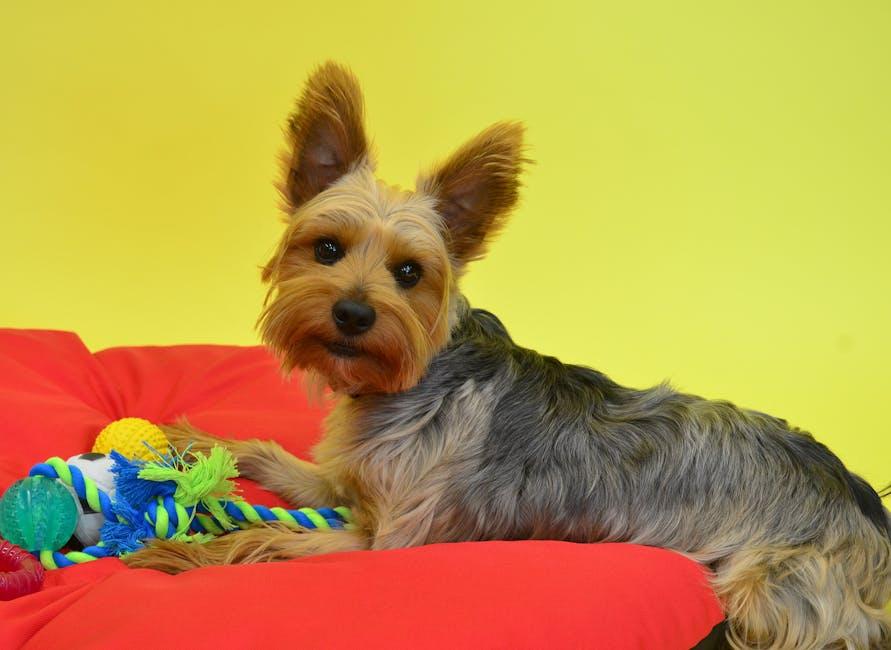Keeping our furry friends entertained and mentally stimulated is a joyful responsibility that comes with being a pet owner. Just like us, dogs can grow bored with the same old routine, and their once-beloved toys can quickly become forgotten relics in the corner of the room. To keep their tails wagging and minds engaged, rotating dog toys is an effective and simple strategy. In this guide, we will explore the art of toy rotation, offering you practical tips and creative ideas to ensure your canine companion remains captivated and content. Whether you’re a seasoned pet parent or a new dog owner, this approach will help you maintain a lively and enriching environment for your beloved pup.
Selecting the Right Toys for Rotation
Choosing the perfect toys for your dog’s rotation schedule can be a delightful adventure. Start by considering your dog’s preferences and energy levels. Active chewers might enjoy durable rubber toys, while gentler pups may prefer plush toys or soft squeakers. Keep an eye out for toys that stimulate multiple senses—those that squeak, crinkle, or have different textures can provide varied experiences.
When curating your rotation, aim for a mix of toys that cater to different play styles. Consider including:
- Puzzle toys to challenge their problem-solving skills.
- Fetch toys for high-energy playtime.
- Tug toys for interactive fun with you.
- Chew toys to satisfy their natural instincts.
Remember to regularly assess the condition of each toy, ensuring they remain safe and engaging. By thoughtfully selecting and rotating toys, you can keep your dog’s playtime fresh and exciting.
Creating a Toy Rotation Schedule
To keep your furry friend engaged and excited about their toys, consider creating a rotation schedule that introduces variety and surprise into their playtime. Begin by gathering all of your dog’s toys and sorting them into categories based on type, such as chew toys, plush toys, and interactive puzzles. Once sorted, divide these toys into smaller groups, ensuring each group contains a mix of different types to maintain a balanced play experience. Aim to have enough groups to rotate every week or two, depending on your dog’s interest levels.
- Observe: Pay attention to which toys your dog gravitates towards and adjust the groups accordingly.
- Clean: Before rotating toys back into play, give them a thorough cleaning to ensure they’re safe and fresh.
- Store: Keep the unused toys in a secure, out-of-reach location to build anticipation for their return.
By thoughtfully rotating your dog’s toys, you not only preserve their interest but also stimulate their mind and encourage healthy play habits. This simple practice can make playtime a more enriching and joyful experience for both you and your beloved pet.

Engaging Your Dog with New and Old Favorites
Keeping your dog engaged with their toys can be a fun and rewarding experience for both of you. By rotating their toys, you can maintain their interest and prevent boredom. Start by creating two groups of toys: new and old favorites. Each week, offer a selection from each group. This will keep your dog’s curiosity piqued as they rediscover their beloved old toys and explore new ones. Remember, dogs thrive on novelty and familiarity, so a balanced mix is key.
- Observe your dog’s preferences: Pay attention to which toys your dog gravitates towards and include those in the rotation more frequently.
- Introduce new textures and sounds: Variety is the spice of life. Try toys with different materials or those that make unique noises to keep your dog’s senses engaged.
- Incorporate interactive play: Spend time playing with your dog using these toys. This not only strengthens your bond but also adds an extra layer of excitement to their playtime.
Rotating toys is not just about maintaining interest, but also about enriching your dog’s environment. Through this simple practice, you can help prevent destructive behaviors that arise from boredom and create a stimulating atmosphere for your furry friend.

Monitoring Your Dog’s Interest and Adjusting Strategies
As you rotate your dog’s toys, it’s important to keep an eye on their reactions and preferences. Dogs, like humans, can have changing tastes and preferences. Notice which toys your dog plays with most enthusiastically and which ones they tend to ignore. This can provide valuable insights into their interests. Observe their playtime and take note of the toys that seem to elicit the most excitement or engagement. This observation will help you make informed decisions about which toys to keep in the rotation and which ones to swap out.
To make the most out of toy rotation, consider adjusting your strategies based on your dog’s feedback. Here are a few tips to help you fine-tune your approach:
- Introduce new toys slowly: Adding too many new toys at once can be overwhelming. Introduce one new toy at a time and see how your dog responds.
- Mix and match: Combine different types of toys, such as plush toys, chew toys, and interactive puzzles, to keep playtime diverse and stimulating.
- Watch for signs of boredom: If your dog seems uninterested, it might be time to switch things up. Rotate in a toy they haven’t seen in a while to reignite their interest.
- Incorporate your dog’s preferences: If your dog shows a clear preference for a certain type of toy, make sure to include it regularly in the rotation.
By paying attention to your dog’s interests and adjusting your strategies accordingly, you can ensure that playtime remains a joyful and engaging experience for your furry friend.

